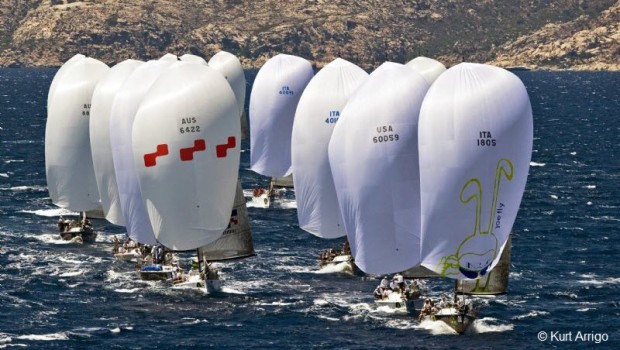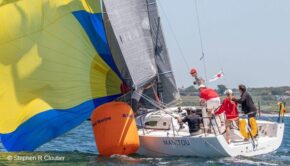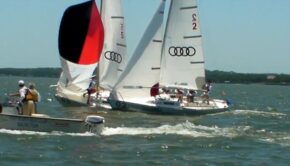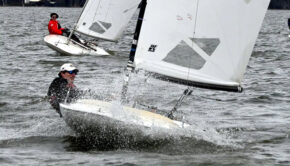Which Game Are You Playing?
Published on July 8th, 2015
by Walter Johnson
In a recent Southern California beer can race, we had a mix of beginners, intermediates and advanced sailors racing against each other. With a poor line, and ebbing tide, it made for a jumbled start so the fleet was well mixed by the time we all got to the weather mark.
With a long run ahead of us, I assured myself that it all would sort itself out by the time we managed to get to the leeward mark. One of the A skippers had leaped out to a good lead, but with a huge pack not too far behind, I felt we would surely catch him and effectively have a restart at the leeward mark.
However, I was reminded that for many sailors the game of boat racing is with the boat next to them. Instead of thinking how we can work together to catch the pack in front, the game for them is how they can race those nearby and slow them down.
So on the offwind leg, I found myself in the middle of a pack of boats, and rather than the boats to weather spreading out and working together to catch the boats in-front, by creating a picket fence, the opposite was occurring. They were slowing down to see how they could blanket the boats next to them, and then the boats next to them, and so on, until the whole pack was going slow, all stuck by one boat, while the leaders ahead sailed away in clear air.
It got me thinking how people get lost in the game; is it with the boat next to them or is the game in front? To me strategically, if you are behind then the game is in front; don’t we all like to win, or do we win by beating the boat next to you while losing track of the boats ahead? Why not work as a pack, to sail fast and catch the boats in front? Is the game where you land early in the race or is it how you finish the race?
I would encourage the fleet to be working together, sailing clean and fast to catch the boats ahead. To me this is how best to sail an early part of the first run of any race.
Often early in a run, while sailing in the top five, I will tell the boats around me to sail fast, so we can leg out on the pack behind, as the further ahead we are the better it is for the each of us. By sailing in a clear lane we can share puffs and sail fast, thereby extending on the pack behind.
Similarly the pack behind needs to use the same strategy, to work together to spread out and form a picket fence to slow the leaders down and draw them back into the pack, to level the game to force a re-start. Why slow down the group, and let the leaders extend? Is it good enough to beat the boat next to you when you as a group can slow down the leaders and make it a yacht race versus a parade?
Sailing is the opposite of NASCAR or bicycle racing, where packs of boats move slower then single boats. To maximize the energy gained from the wind, the more we sail as a block of boats the slower we go. Similar if we work together and form a picket fence the group forms a shadow that can grab the leaders and bring them back into the pack.
Despite the logic, I have learned that some people are happy forming a parade. There sphere of influence are the boats next to them, thus forgetting the big picture. They forget that packs of boats move more slowly then boats on their own, and are happy watching the pack beneath them wallow in sorrow.
Next time when you’re out racing, and it’s the first run of a long race, think about how you are playing the game. Are you settling only to beat the boat next to you, or are you willing to work with that boat to beat the boats ahead? If I am the boat next to you, I hope it’s the later so we can high five each other afterwards in the bar.
Note: Walter Johnson is a marine industry professional in Southern California, who years ago was a college sailing teammate with Scuttlebutt editor Craig Leweck.









 We’ll keep your information safe.
We’ll keep your information safe.